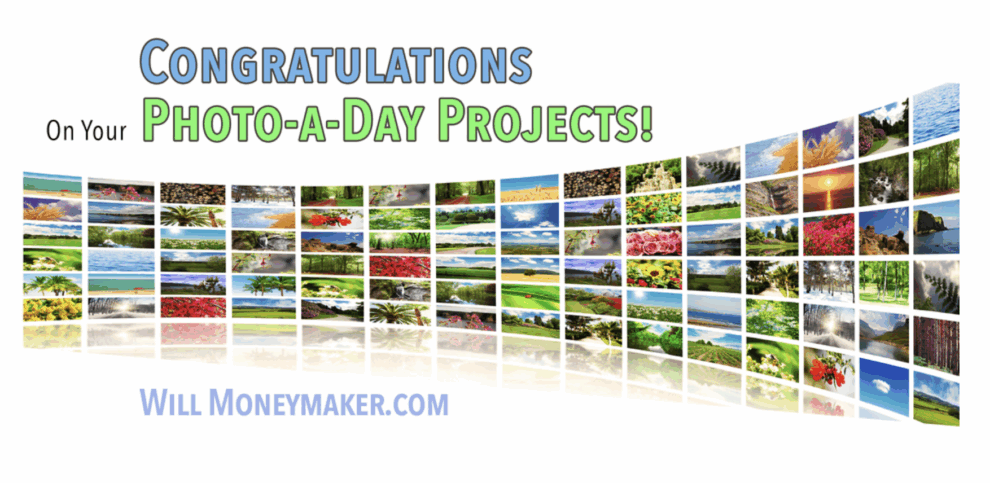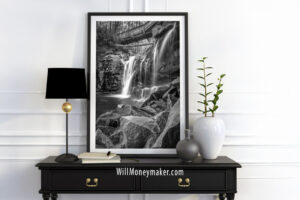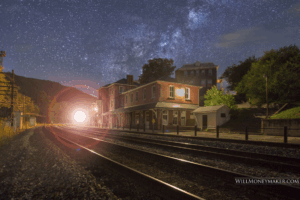Last year, I talked about photo-a-day projects and their benefits, and many of you reading my blog decided to take on the challenge. Taking a photo each day for 365 days — that is commendable, an extraordinary feat that requires a lot of hard work and dedication. The benefits from the work that you have done are many. A photo-a-day project teaches you to observe your surroundings, looking for something interesting, and along the way, you pick up valuable skills, improving your composition, understanding of lighting, colors and more.
Not every photo in a photo-a-day project is a masterpiece. Most photographers produce very few masterpieces over long careers and hundreds of thousands of images taken. And that is another important lesson to take away from this type of project. You likely came away with a few images that you love, and many more that just don’t make the cut.
So again, congratulations on completing these daunting projects! If you feel up to the task, there are plenty more projects that you can do to improve your photography skills. For this coming year, instead of doing a photo-a-day project, why not work on learning a new technique each month?
With this new project, instead of taking at least one photo each day, you’ll pick out a new technique for the month and do your best to learn all about it. The options here are limitless. You can learn about lighting one month, shooting with a narrow depth of field the next month, and utilizing motion blur the month after that. To give you some ideas, I’ll list a few techniques that you can learn — but feel free to choose any techniques you like!
1. Front, Side and Back Lighting
Front, side, and backlighting are normally one of the first things that a new photographer learns, but more practice never hurts. To learn more about this technique, you won’t even need additional equipment. Instead, practice with the sun, or with a light source like a lamp. Position the light source to the front, back and either side of the subject to see how the different lighting types affect the final image.
2. Off Camera Lighting
For this technique, you will need some extra gear — flashes or strobes and light stands, certainly, and possibly umbrellas, reflectors, gels, and filters for the flashes if you want to pursue different lighting effects. You’ll also need a way to operate those flashes, so purchase flashes that are made to work remotely with your camera or invest in cables or wireless technology to make sure that the camera can communicate with the flashes. If you are on a budget, Vivitar makes a great assortment of inexpensive flashes that you can buy new or used.
Once you have the gear that you want to work with, then take it out in the field and start experimenting. You’ll quickly find that off camera lighting gives you hundreds of possibilities when it comes to photo effects.
3. Using Motion Blur
Capturing motion blur can be tricky, and there are two ways to do it. You can either freeze the subject in the frame and blur the background, or blur the subject so that the background is crystal clear. If you choose to keep the subject in focus, then you’ll need to learn to track the subject. And if you want to freeze the background, then you’ll need to learn how to adjust the shutter speed and other settings to get a nice blur. To practice, try this technique out on your kids as they run through the yard, or your pets, wild birds, running water, even cars speeding along a highway.
4. Nighttime Photography
Nighttime photography is another valuable technique that can be used to create unusual images. For this, you will be best off with an inexpensive remote shutter release for your camera. In a pinch, you can use your camera’s timer so as not to jostle the camera while the image is being exposed. With this technique, you need to have an incredibly slow shutter speed so that the camera’s shutter can take in as much light as possible. Often this also means opening the aperture wide and increasing the ISO to higher numbers just so that you can capture as much light as you can.
5. Using Neutral Density Filters
Neutral density filters (and many other types of filters besides) are essential parts of the photographer’s kit. These filters are meant to balance an image where lighting is highly uneven. If you have ever taken a landscape photograph with a glaringly bright sky and dull, dark foreground, then that is the perfect image to illustrate the need for neutral density filters. You can use them to darken the sky so that the exposure is properly balanced. I also enjoy using them to take photographs of waterfalls because they let me use longer shutter speeds in brighter light so that I can capture the blur of rushing water.
6. Taking Candid Photos
If you are a fan of photographs featuring people, then candid photography will be right up your alley. With this technique, you will be taking photos of people as they are engaging in an activity rather than formally posing them as you would for a portrait. Just make sure that you follow the laws about photography in private and public places, and when in doubt, ask for permission before you start taking photos.
7. Macro Photography
Macro photography is the art of extreme close up images, and most photographers at least flirt with it at some point over their careers. Some even turn macro photography into a full-time career. This technique can be accomplished any number of ways. Use macro filters, extension tubes, which extend the length of a lens, a reversing ring to use your lenses backwards or an actual macro lens. Macro filters tend to be the least expensive way to get started, but the magnification isn’t as high as it is with other types of macro equipment, and many consider the lower level of magnification to be a step shy of true macro photography.
On the high end, macro lenses will produce some of the highest magnification, but they can be prohibitively expensive. In some cities, you may be able to rent a macro lens for a month or two, but most beginners stick with the cheaper technologies as they are learning.
There are many, many more techniques that you can try. I recommend creating a list for the year — 12 techniques, one for each month. As you choose techniques, think about the weather, vacations you may be taking and other opportunities to practice a given technique. Nighttime photography, for instance, is much more common in the summer months when it is comfortable to stay outside at night for hours on end. Most importantly, however, have fun with this new project and you’re certain to learn many valuable new skills!






